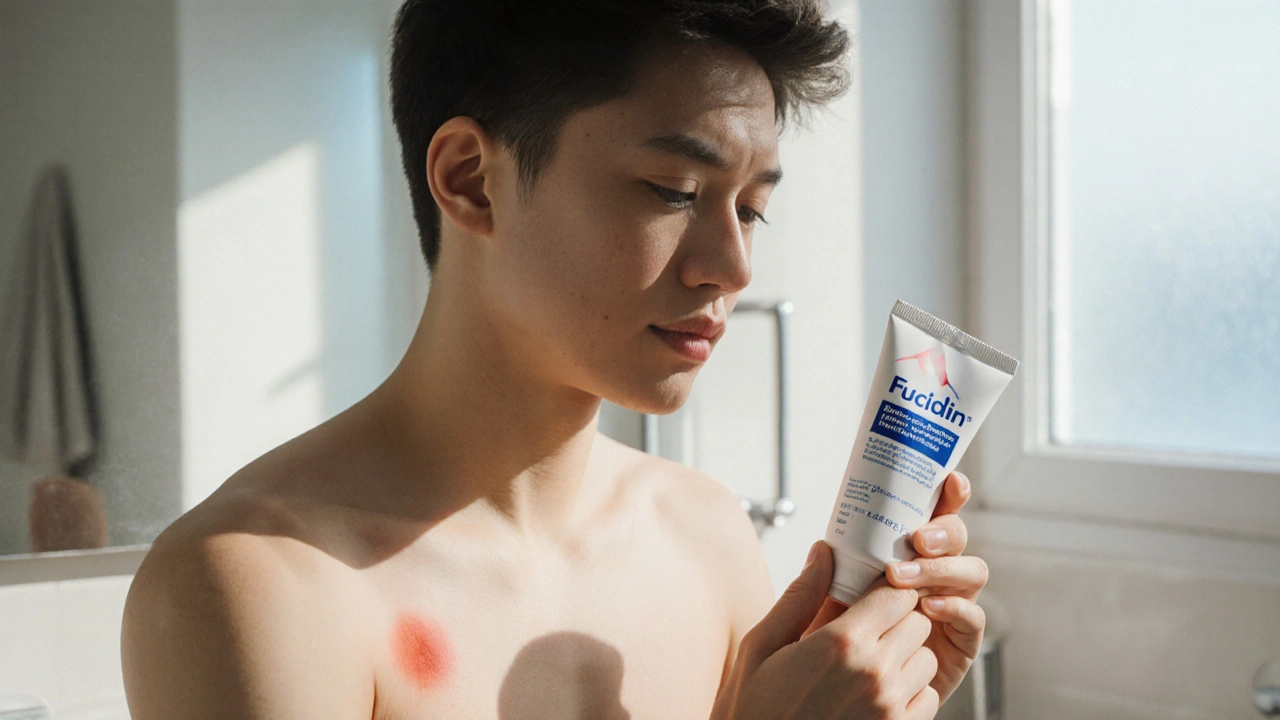Topical Antibiotics: What They Are and When to Use Them
When working with Topical Antibiotics, medicinal creams, gels, or ointments applied directly to the skin to fight bacterial infections. Also known as skin antibiotics, it offers a focused way to treat cutaneous wounds without systemic side effects. Skin Infection, any bacterial invasion of the epidermis or deeper layers often triggers a prescription for these agents. Common examples include Mupirocin, a potent ointment used for impetigo and small abrasions, while the growing concern of Antibiotic Resistance, the ability of bacteria to survive drug exposure shapes how doctors choose the right product.
Topical antibiotics come in a few well‑known families. Mupirocin is a prescription‑only ointment that disrupts bacterial protein synthesis, making it effective against Staphylococcus aureus and Streptococcus pyogenes. Over‑the‑counter options like bacitracin or neomycin combine broad‑spectrum activity with easy access, but they can cause allergic reactions in up to 10% of users. Each formulation—cream, gel, ointment, or spray—has a different absorption rate, so the choice depends on the wound’s location and moisture level. The relationship here is clear: the type of topical antibiotic determines how quickly it reaches the infection site and how well it stays in place.
Why Proper Diagnosis Matters
Not every red spot needs an antibiotic. Minor irritations, fungal infections, or viral rashes might look similar but require totally different treatments. A clinician’s job is to match the right drug to the right pathogen; that’s why “topical antibiotics” require a proper diagnosis of a skin infection before they’re applied. When you know the specific bacteria, you can select an agent that targets it without overusing broad‑spectrum drugs, which helps curb antibiotic resistance. This simple step saves time, money, and reduces the risk of side effects.
Speaking of resistance, misuse of topical antibiotics—such as treating a harmless rash or using them longer than recommended—feeds the same problem that plagues oral antibiotics. Studies show that over‑use in dermatology can lead to resistant strains on the skin, making future infections harder to treat. Therefore, stewardship principles that apply to pills also apply to creams: only use when needed, follow the prescribed duration, and keep the skin clean to aid healing.
Now, let’s talk about where to get these products. If you have a prescription, many reputable online pharmacies list generic versions at a fraction of the brand‑name price. Our guide to buying cheap generics—whether it’s albuterol, wellbutrin, or even a topical antibiotic—covers red‑flag checks, price‑comparison tables, and safe‑ordering tips. In the UK, Canada, and Australia, you’ll find licensed sites that verify pharmacist credentials and display clear pricing. The same rules apply: look for a licensed pharmacy, compare at least three offers, and avoid sites that promise “no prescription needed” for prescription‑only ointments like mupirocin. Doing this saves you up to 60% compared with brick‑and‑mortar stores.
Safety isn’t just about buying from the right source; it’s also about using the product correctly. Apply a thin layer to clean, dry skin, and wash your hands before and after. If you notice itching, rash spreading, or severe redness, stop use and contact a healthcare professional—those could be signs of an allergic reaction. Pregnant or breastfeeding individuals should ask their doctor before starting any topical antibiotic, as some ingredients cross the skin barrier. Kids under two years often need pediatric‑specific formulas, another reason why professional guidance matters.
All this background sets the stage for the articles you’ll find below. We’ve gathered resources that walk you through buying cheap generics safely, compare popular antibiotic ointments, explain how skin infections develop, and offer practical tips for managing them at home. Whether you’re looking for a quick price guide, a deep dive into drug comparisons, or advice on minimizing resistance, the collection has you covered. Dive in and discover the insights that will help you choose and use topical antibiotics wisely.
Fucidin Cream vs Alternatives: Which Topical Antibiotic Wins?
Compare Fucidin cream with popular alternatives like mupirocin, clindamycin, and retapamulin. Learn effectiveness, price, side‑effects and how to choose the right topical antibiotic.
Keep Reading
